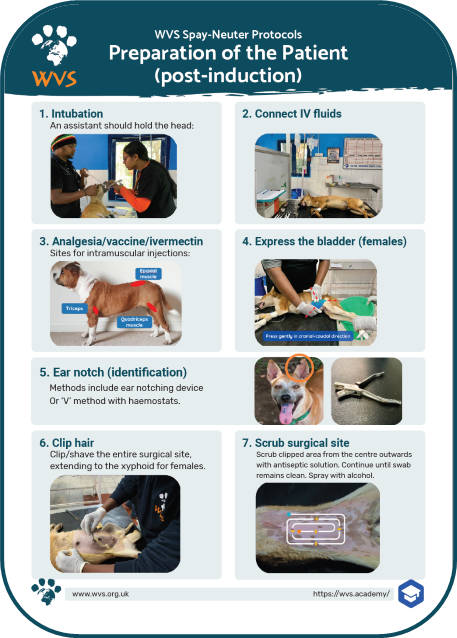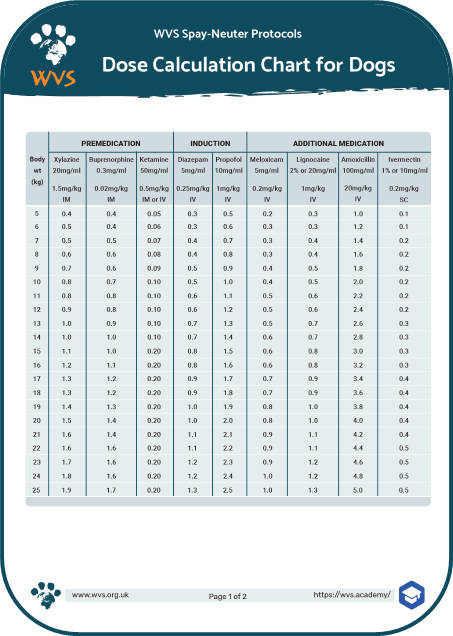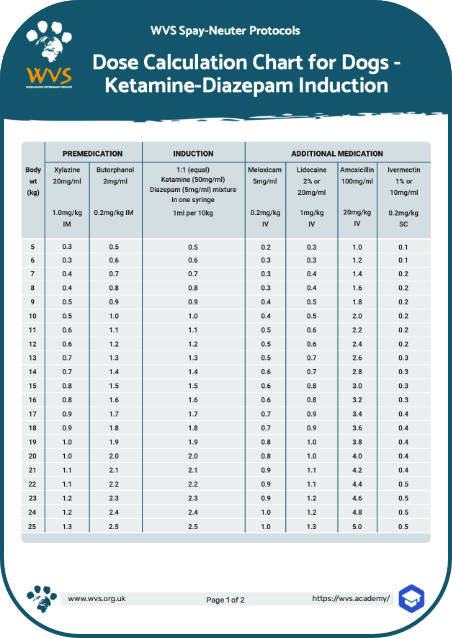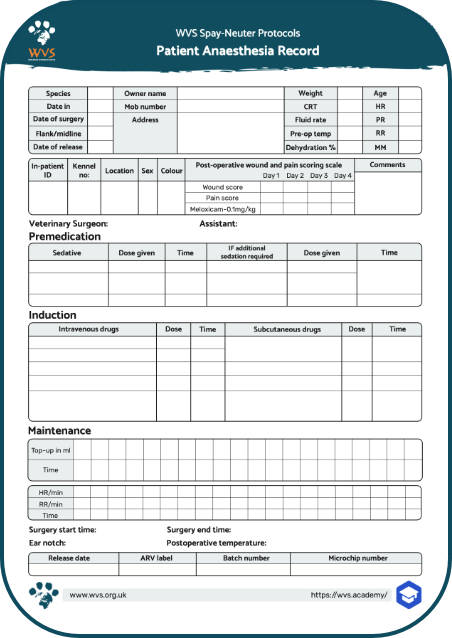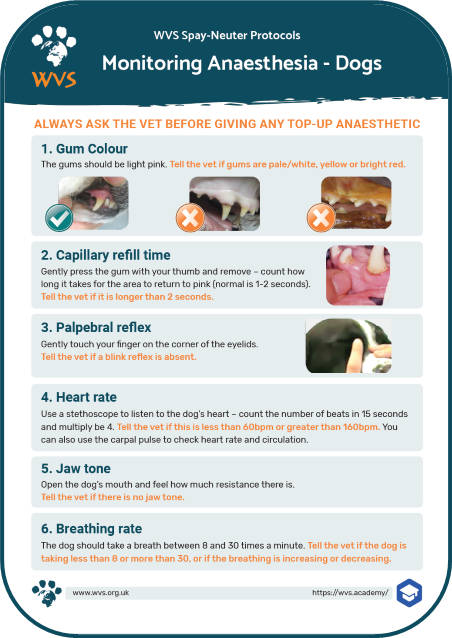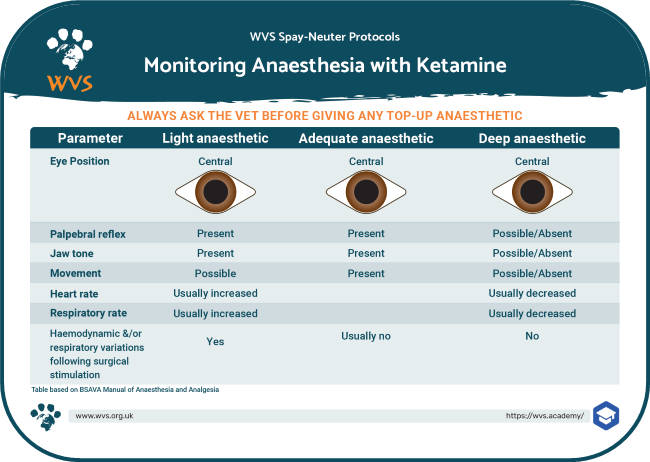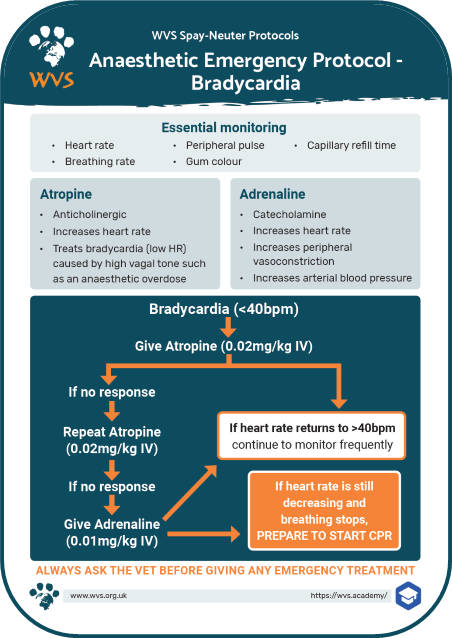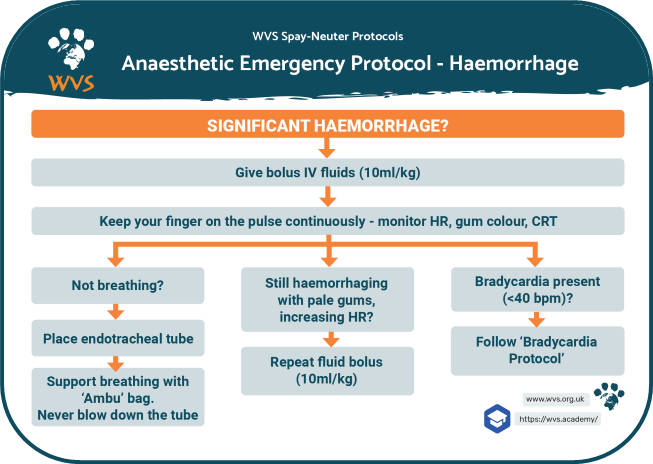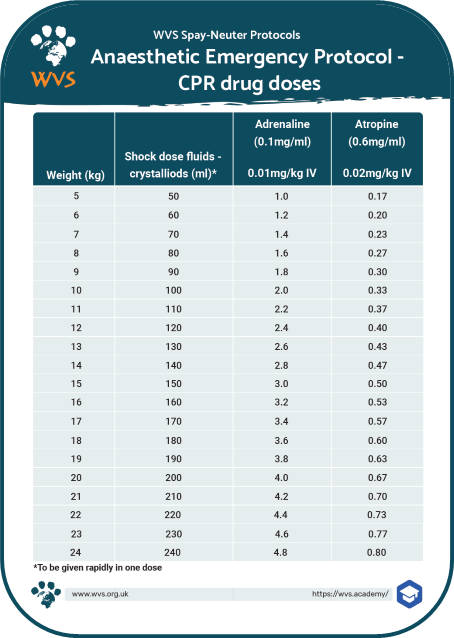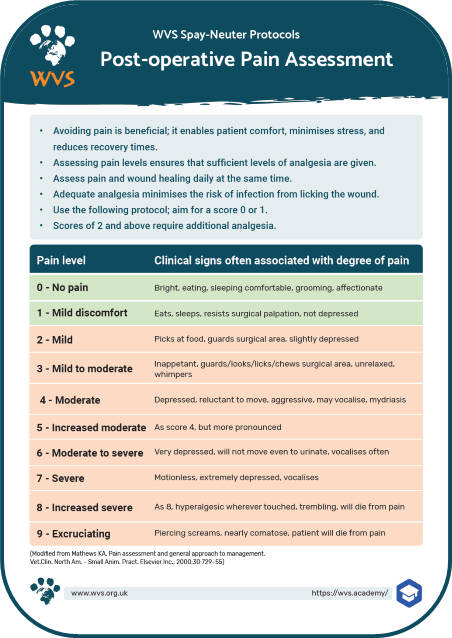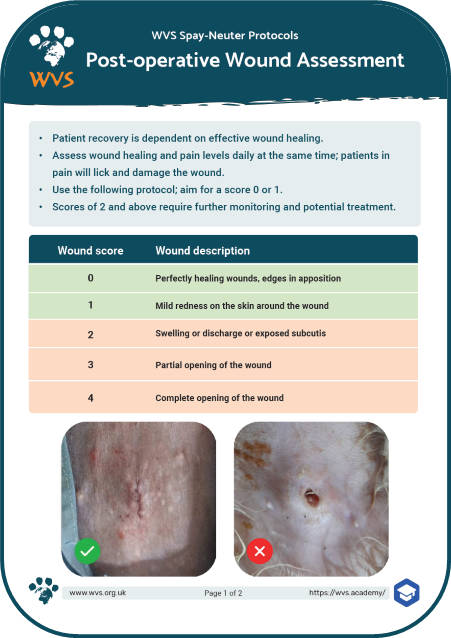We use cookies
We use cookies to ensure that we give you the best experience on our website. Would you like to accept all cookies for this site?
Clinic downloads
This section enables you to download standard protocols for display in your clinic as a quick reference for the team.
Please always carefully cross-check the referenced drug concentrations with those used in your clinic as these can vary and will affect the calculated doses.
Covered in this article
Pre-surgical protocols
Preparation of the patient
This poster can be displayed in your preparation area as a reminder of the steps for preparing the patient for surgery.
Anaesthetic protocols
Dose chart for propofol induction
This dose chart is for an anaesthetic protocol using multi-modal analgesia to reduce the total dose of anaesthetic agents required.
Take care to check the concentration of medications in your clinic, particularly xylazine (20mg/ml) and ketamine (50mg/ml). Ketamine is also available in 100mg/ml, so you must recalculate your dose if you are using this higher concentration.
Dose chart for ketamine-diazepam induction
Another protocol using alternative anaesthetic agents, and also incorporating multi-modal analgesia.
Take care to check the concentration of medications in your clinic, particularly xylazine (20mg/ml) and ketamine (50mg/ml). Ketamine is also available in 100mg/ml, so you must recalculate your dose if you are using this higher concentration.
Patient Anaesthetic Record
This patient record sheet is to assist in monitoring a patient through anaesthesia and during the post-operative period. It is important to keep a written record of the timing and details of drug administration and clinical parameters so that trends can be easily observed; in addition, it ensures continuity of care throughout a patient's procedure and recovery period.
The layout and doses of this patient record sheet correlate with the above anaesthetic protocol.
Anaesthetic monitoring
This poster is to display in the operating clinic to aid in the training of junior veterinary assistants and technicians in the routine parameters for monitoring anaesthetised patients.
Monitoring of animals anaesthetised with ketamine
Animals anaesthetised with ketamine may continue to show a palpebral reflex and jaw tone, even at deep planes of anaesthesia. This must be taken into consideration when evaluating anaesthetic depth. This poster aims to assist junior veterinary assistants and technicians when monitoring animals anaesthetised with ketamine.
Anaesthetic emergencies
Bradycardia emergency treatment
This poster is to display in the operating clinic to aid in the training of junior veterinary assistants and technicians in the routine parameters for monitoring anaesthetised patients.
Haemorrhage emergency treatment
Although good surgical technique aims to avoid significant haemorrhage, this may still occur and prompt action is needed by the team to stabilise the patient whilst the surgeon concentrates on identifying and stopping the bleeding.
This poster outlines the steps to support a patient during a significant haemorrhage event.
Cardio-pulmonary resuscitation dose chart
Immediate action is needed when an animal goes into cardio-pulmonary arrest. Treatment of the underlying cause is essential, however emergency resuscitation is critical to buying time. This poster provides the dose chart for medications used during CPR.
Post-operative period
Pain assessment
Establishing an objective protocol for the assessment of pain helps to ensure consistency in patient management throughout the clinical team and makes it possible to better monitor a patients condition over time.
This clinic poster provides the basic method for pain scoring.
Wound assessment
In conjunction with pain scoring, surgical wounds should be assessed daily to ensure that there is health wound healing without signs of complications, giving you the confidence to discharge your patient safely.
This clinic poster provides the basic method for wound scoring.
© WVS Academy 2025 - All rights reserved.
